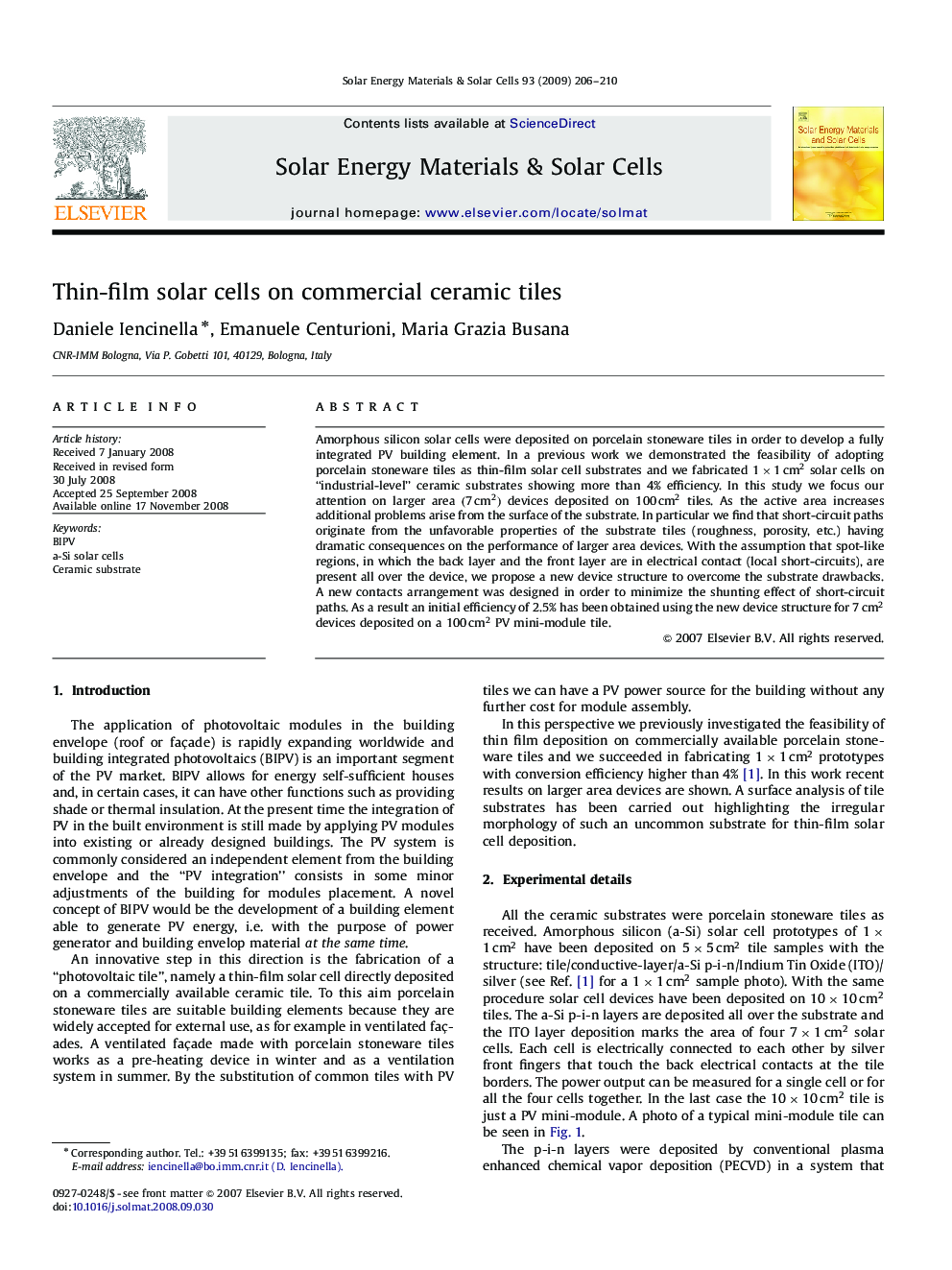| Article ID | Journal | Published Year | Pages | File Type |
|---|---|---|---|---|
| 80164 | Solar Energy Materials and Solar Cells | 2009 | 5 Pages |
Amorphous silicon solar cells were deposited on porcelain stoneware tiles in order to develop a fully integrated PV building element. In a previous work we demonstrated the feasibility of adopting porcelain stoneware tiles as thin-film solar cell substrates and we fabricated 1×1cm2 solar cells on “industrial-level” ceramic substrates showing more than 4% efficiency. In this study we focus our attention on larger area (7cm2) devices deposited on 100cm2 tiles. As the active area increases additional problems arise from the surface of the substrate. In particular we find that short-circuit paths originate from the unfavorable properties of the substrate tiles (roughness, porosity, etc.) having dramatic consequences on the performance of larger area devices. With the assumption that spot-like regions, in which the back layer and the front layer are in electrical contact (local short-circuits), are present all over the device, we propose a new device structure to overcome the substrate drawbacks. A new contacts arrangement was designed in order to minimize the shunting effect of short-circuit paths. As a result an initial efficiency of 2.5% has been obtained using the new device structure for 7cm2 devices deposited on a 100cm2 PV mini-module tile.
